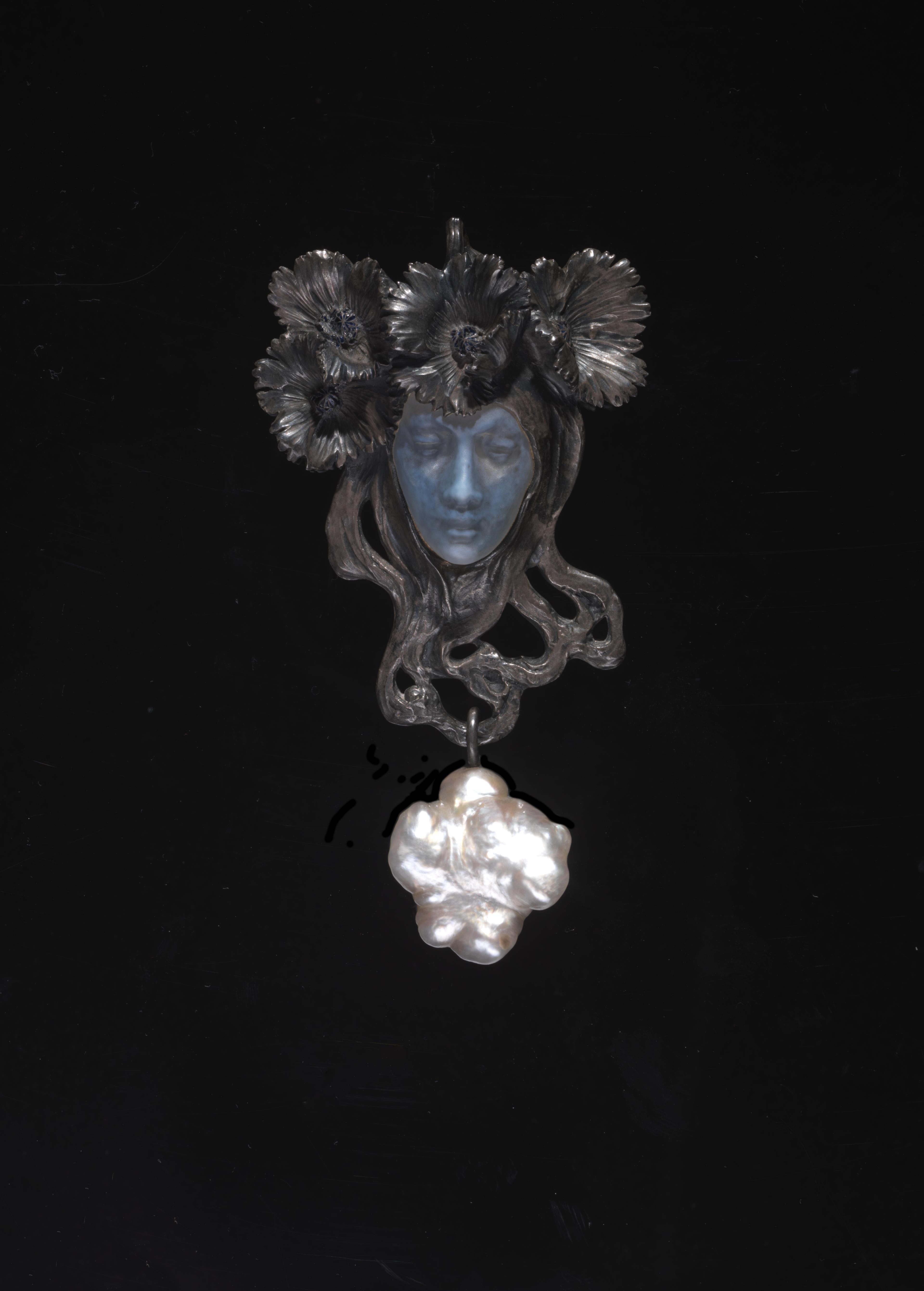Gallery

A constant source of inspiration in René Lalique’s work, totally instilled with the spirit of the Art Nouveau style, the image of the woman was simultaneously the subject and object of some of the artist’s most daring creations. Within the wider universe of Lalique’s omnipresent feminine imagery, the specific theme of the flower-woman, so dear to the poetry of the time, also made a decisive mark on the master’s creative originality.
The Female Face pendant features a moulded face in opalescent glass and a hanging Baroque pearl of Renaissance influence. This element is surrounded by four open poppies in patinated silver, an emblematic flower in the Art Nouveau period whose symbolism is associated with the dream world. The use of glass rather than precious stones to make jewellery is indicative of Lalique’s important role in transforming jewellery making, which he truly revolutionised with his original creations.
Object details
- Author(s)
- René Lalique (1860-1945), Jeweler
- Title
- Pendant «Female Face»
- Origin
- France
- Date
- c. 1898 – 1900
- Materials
- Glass; Silver; Enamel; Pérola\Baroque pearl
- Technique
- Moulded glass; Chased and enamelled silver
- Dimensions
- Width 52,00 mm; Height 26,00 mm; Height 70,00 mm; Width 24,00 mm
- Inventory no.
- 1141
Incorporation
- Type
- Purchased
- Provenance
- René Lalique (1860-1945)
- Date
- 1901